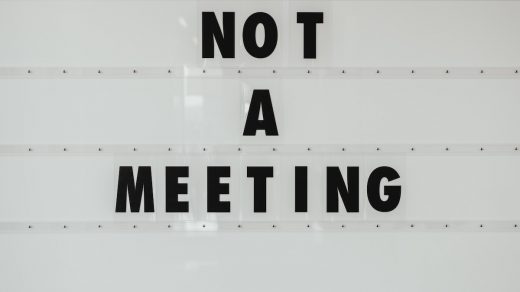In July of 2015, presidential candidate Bernie Sanders took the stage at the Netroots Nation conference in Phoenix expecting a friendly crowd. Several activists affiliated with the Black Lives Matter movement disrupted his prepared speech, demanding that he and other Democratic candidates take stronger policy stances to promote racial justice. Until that point in the presidential primary, the issue had not featured heavily in the campaigns of either Senator Sanders or his main contender, Secretary Hillary Clinton. Thereafter, the candidates were hounded with questions about whether they would meet the moment with more robust proposals to address racial injustices. Ultimately, the 2016 Democratic platform did not contain all of the policies the activists had wanted, reflecting a shift toward more aggressive reforms to policing, recognizing systemic racism, and ending the war on drugs.
This post is the fourth and final part in a series about how advocacy organizations can navigate “issue landscapes.” The concept of an issue landscape ecompasses who is impacted by a policy, the intensity of their support or opposition to various solutions, their ability to organize, and their level of influence with policymakers. Understanding the issue landscape is critical to determining which tactics and strategies are more or less likely to help you advance your policy goals. This post will focus on the question of whether your issue is something policymakers are paying attention to—and if not, how to get it “on the agenda.” Two related dynamics have an outsized influence on what makes it onto policymaker’s radar: 1) what issues the media chooses to cover and 2) what issues political party leaders, particularly executive leaders in the United States but also, to a much lesser extent, legislative leaders—choose to prioritize. The good news is that unlike the narrow set of options outlined in the previous post on structural inequality, there are a lot of short-term tactics you can employ to raise the profile of your favored policy issue.
Media, Public Opinion, and Agenda Setting
Media leaders (both reporters and opinion writers) and the topics they choose to cover may wield the greatest influence of all factors on which policy issues garner attention from policymakers. The best social science suggests that political figures and media professionals have outsized influence on what the public supports or opposes. While social media has diminished the once-overwhelming influence of outlets such as the New York Times, these outlets still play a significant role in helping people sift through seemingly infinite amounts of information to determine what’s important. Moreover, policymakers themselves are also avid consumers of media. President Trump’s live tweeting of his favorite Fox and Friends segments is perhaps the most comical and somewhat horrifying example of this. In truth, nearly all policymakers consume some form of media. The only difference may be the source, with an article more likely to come from the New York Times or Vox for left-of-center leaders, compared to Fox or the Wall Street Journal for conservatives. Local news is probably more influential with Members of Congress and academic evidence links the political bent of local outlets with the policy positions of their Representatives.
Advocates and organizers have numerous options to influence media coverage. The direct action tactics at the Netroots Nation conference highlighted above provide a good example. Part of the activists’ success stemmed from the spectacle they created and the follow-on media coverage in major outlets as reporters repeatedly asked the candidates how they planned to address racial justice. Large rallies in front of city hall can serve a similar purpose. The famous march that John Lewis helped lead across the Edmund Pettus Bridge during the 1960s Civil Rights Movement also employed a media strategy—one that required tremendous courage to execute. Many civil rights leaders at the time estimated that non-violent protests would be most likely to win public support for their cause. However, a peaceful march down a side street in a southern town with no opposition was not likely to gain attention. Marchers picked places like Selma precisely because they were likely to trigger a violent response by state authorities, something that could be caught on camera and sent to national news outlets. Rigorous academic research has since borne out the effectiveness of their strategy. President Trump’s tear-gassing of peaceful protesters in Lafayette Square in the summer of 2020 triggered a similar dynamic.
Thankfully, suffering through state-sponsored violence is not the only way to set the agenda; there are numerous other tactics advocates can use to garner media attention. Reporters frequently look to advocates for help finding personal stories that can lend compelling emotional context to broad political and social trends. A well-placed story need not be in a major national outlet like CNN to have an impact. This excellent coverage of the Department of Education’s ineffectiveness in discharging student loan debt for disabled borrowers embarrassed the agency into addressing the issue after years of inaction. Advocates worked to provide sympathetic stories to an outlet that Education Department officials would likely pay attention to: the Chronicle of Higher Education.
Another option to solicit coverage is to release new data. To the chagrin of policy wonks everywhere, most policy white papers are not the stuff of viral news articles. However, crunching numbers in a way that reveals a new insight or trend can catch people’s attention. The Century Foundation’s finding that 12 million workers will lose unemployment benefits the day after Christmas unless Congress extends emergency unemployment programs used this tactic to drive widespread coverage. The specific number, emotional valence of Christmas, policy deadline, and number of people affected all combine to make a compelling story. Polling data, particularly if trends have changed over time, also catches the eye of reporters. The dynamic has accelerated with the rise of data journalism: Outlets such as FiveThirtyEight, The Upshot, and Vox frequently rely on quantitative analysis and social science research to back up their articles.
The Role of Social Media
As I noted above, social media has changed the dynamic around agenda-setting. Now that the internet enables practically anyone to be a publisher, the New York Times does not have the same degree of influence it once did. In extreme circumstances, such as during the Arab Spring movement when authoritarian regimes prevented news stations from covering protestings, digital platforms such as Facebook and Twitter allowed activists to organize protests in order to force their concerns onto policymakers’ agendas. Twitter, in particular, is important because many reporters use it as a platform to discuss issues, find sources, and track trends. Rather than see it as a complete replacement for traditional media, advocates can use Twitter as an avenue to reach traditional media sources by building an online presence, publicizing their work, and creating relationships with reporters at traditional outlets, as well as other influencers.
Policymakers’ Priorities
Holding elected office, particularly an executive role such as the president, a governor, or mayor, also provides a major opportunity to set the agenda. States and cities frequently provide annual opportunities for an executive to mimic the president’s “state of the union” address, giving these policymakers an opportunity to highlight issues they believe the corresponding legislative body should address. It can give the executive the power to push a favored policy through even if most people disagree. During the 2008 presidential campaign, unions and other advocacy groups led a concerted effort to put health care reform on the top of the Democratic agenda. Their efforts influenced President Obama to prioritize health care reform in his first term, despite its unpopularity at the time and the price his party paid during the 2010 midterm elections. President Trump’s debt-financed tax cut mainly benefiting the rich, is another example of a party leaders’ ability to push through an unpopular agenda.
The power of executives to set the agenda is part of why so many advocacy groups focus on gaining attention during the presidential primary process by releasing polling, showing up at campaign events, and encouraging debate moderators to ask candidates about their favored issue. Partly this is a media strategy in its own right. But there is also a constituency element of this approach: demonstrating that a group of voters whom the candidate wants to win over care about a certain issue. Since every advocate is typically taking such action doing this on their issue all at the same time, banding an influential constituency or constituencies together around a common set of policies can be one way to break through the noise. Reproductive rights activists, for example, band together and make the case that if a Democratic primary candidate wants to win support of Democratic women, they need to get on board with policies that reflect that demographic’s priorities.
Conclusion
A presidential primary is an intense microcosm of the broader political process where every advocate is simultaneously trying to put their issue on the agenda. And while mass protests can be particularly effective at agenda setting, it’s not so easy to simply order one up. However, there are numerous tactics advocates can use to increase attention to the problems they are trying to solve. While social media has not completely replaced traditional outlets, effective use of Twitter and other platforms’ tools can help you reach traditional reporters. Nor do you need to focus on national outlets: sometimes a well-targeted story placed in a trade journal or municipal politics blog will reach the right ears. Add up a series of tactical moves and you can effectively shift attention in your direction.


